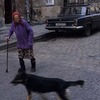Chernobyl Toll Less Than Feared
Fewer than 60 deaths have been directly attributed to radiation released by the 1986 Chernobyl nuclear power plant accident, and the final toll could be thousands less than originally believed, the U.N. nuclear watchdog agency said Monday.
However, anxiety caused by fear of death and illness from radiation poisoning is causing serious mental health problems, and such worries ``show no signs of diminishing and may even be spreading,'' the International Atomic Energy Agency said, citing a report compiled by 100 scientists.
The death toll attributed to radiation could reach 4,000, said the report, compiled on behalf of the Chernobyl Forum, a group that includes the Vienna-based IAEA, seven other U.N. agencies and the governments of Ukraine - where Chernobyl is located - Belarus and Russia.
Ukraine said previously it had registered 4,400 deaths related to the accident, and early speculation following the radiation release predicted that tens of thousands would die.
But forum chairman Dr. Burton Bennett said Monday that previous death tolls were inflated, perhaps "to attract attention to the accident, to attract sympathy.'' He said the majority of workers and residents around the plant received low doses of radiation, and that poverty and "lifestyle diseases'' posed a "far greater threat'' to local communities.
A two-day meeting to discuss the report starts Tuesday.
Greenpeace condemned the findings, accusing the IAEA of ``whitewashing'' the impacts of the accident.
"Denying the real implications is not only insulting the thousands of victims - who are told to be sick because of stress and irrational fear - but it also leads to dangerous recommendations, to relocate people in contaminated areas,'' said Jan Vande Putte, Greenpeace International nuclear campaigner.
The 600-page U.N. report says a lack of accurate information about the accident's consequences has made the mental health impact "he largest public health problem created by the accident.''
"These problems manifest as negative self-assessments of health, belief in a shortened life expectancy, lack of initiative and dependency on assistance from the state,'' the agency said in a statement.
"Persistent myths and misperceptions about the threat of radiation have resulted in 'paralyzing fatalism' among residents of affected areas.''
Teachers and others with influence must receive better information so they can counter those fears, said Kalman Mizsei of the U.N. Development Program.
"The health and environmental effects ... have been relatively and surprisingly minor,'' Mizsei said.
He added that support programs to Chernobyl victims should concentrate on the groups affected by high levels of radiation. As of now, 5 million to 7 million people receive handouts, while only 200,000 people were exposed to higher levels of radiation.
For example, Belarus spent 22 percent of its national budget in 1991 on Chernobyl-related expenses. That amount since has fallen to 6 percent, according to UNDP statistics. Ukraine spends 5 percent to 7 percent of its budget on costs related to the accident.
By moving away from the illusion that the accident still has a ruinous effect, people can start improving their lives, Mizsei said.
"Pushing millions of people into this dependency is not helpful,'' he said.
However, Ukrainian officials and a Chernobyl activist group said the accident continues to cause health and environmental problems, and its victims will require international support for years to come.
"Chernobyl was, is and will be one of Ukraine's biggest problem,'' said Ukraine Emergency Situations Ministry spokesman Oleh Andreev. "The one who says the devil is not as black as he is painted had better live here and see the problem from the inside.''
The report also says there is no evidence of decreased fertility following the accident nor of any increase in congenital malformations.
The survival rate of the about 4,000 cases of thyroid cancer caused by the accident has been almost 99 percent, the report said. Nine of the 56 deaths recorded so far were children who succumbed to thyroid cancer.
Thyroid cancer patients and thousands of workers exposed to high levels of radiation in the days following the accident suffered ``major health consequences,'' Bennett said.
"The majority of workers and population received fairly low doses,'' Bennett said.
Lung cancer caused by smoking was expected to kill three times as many people as Chernobyl-related cancers, he added.





